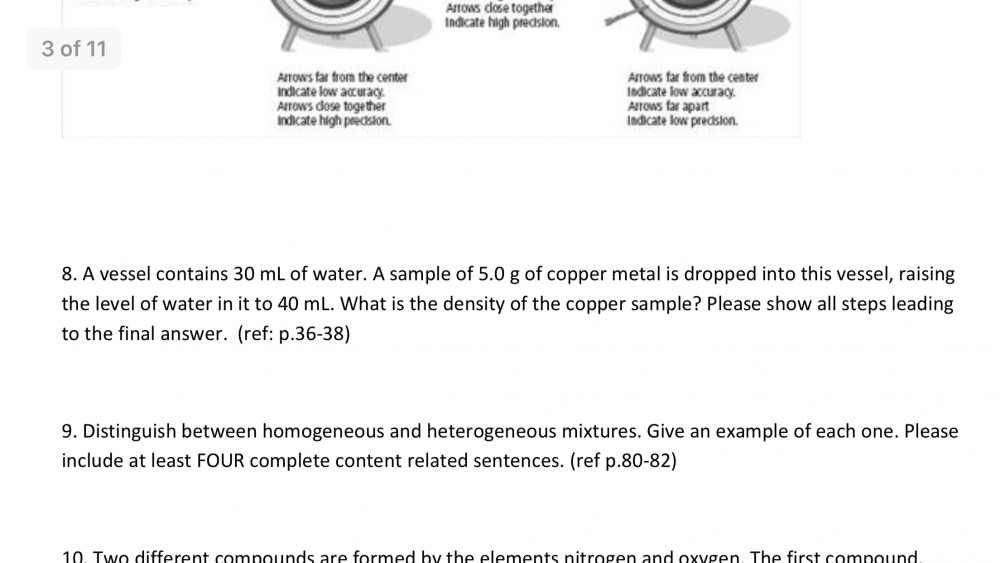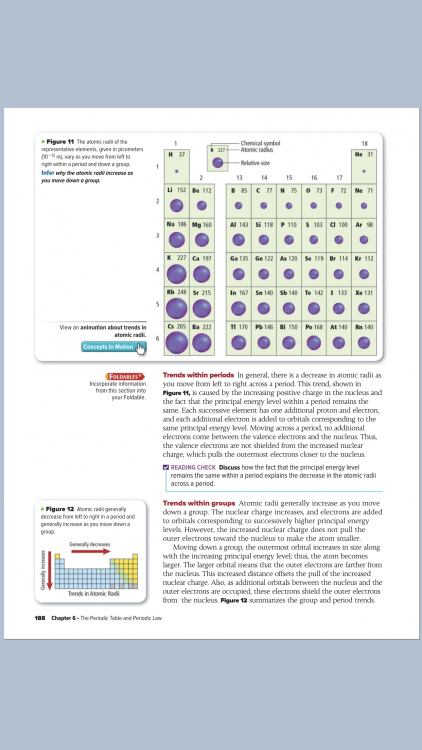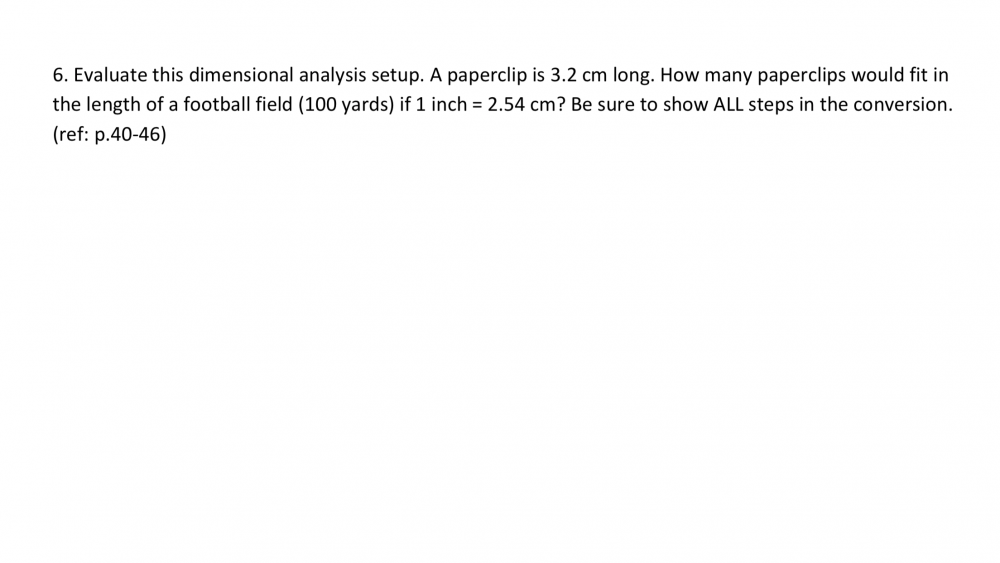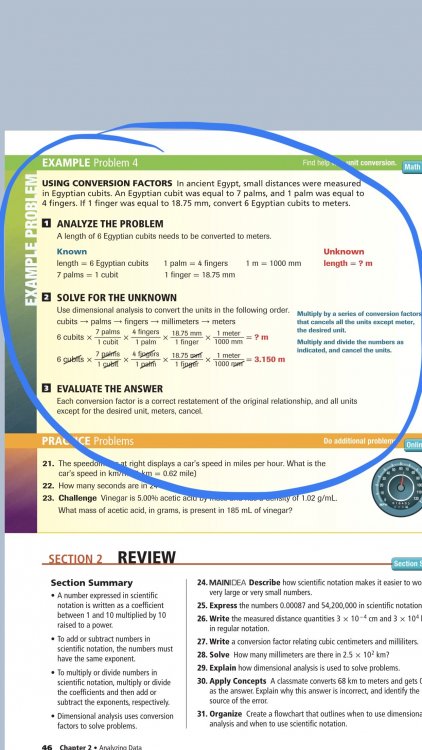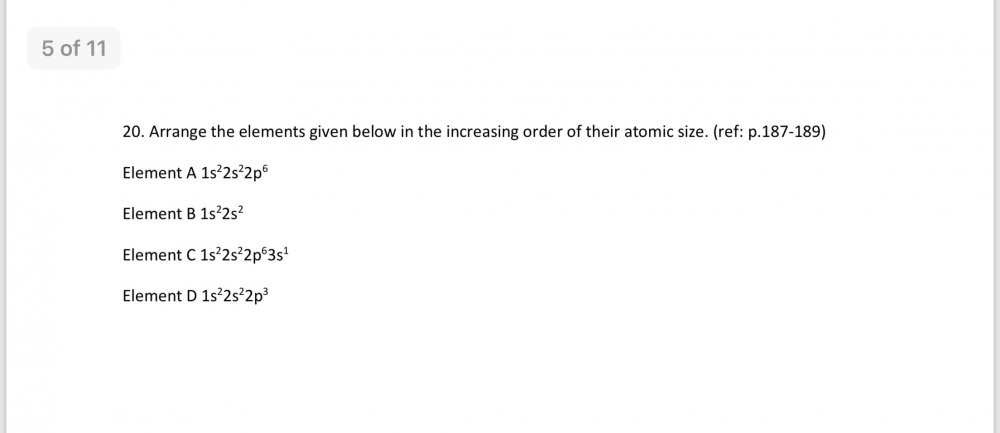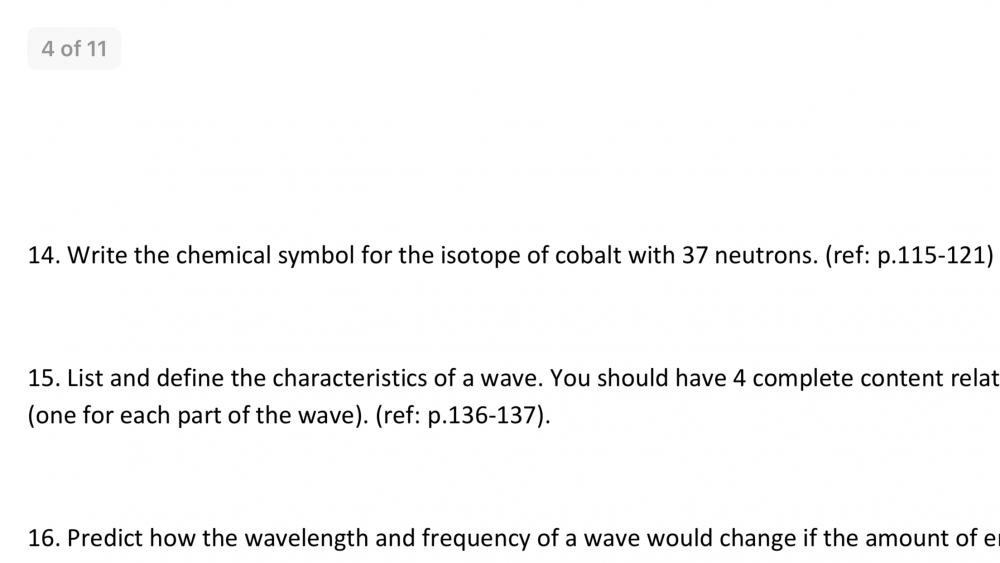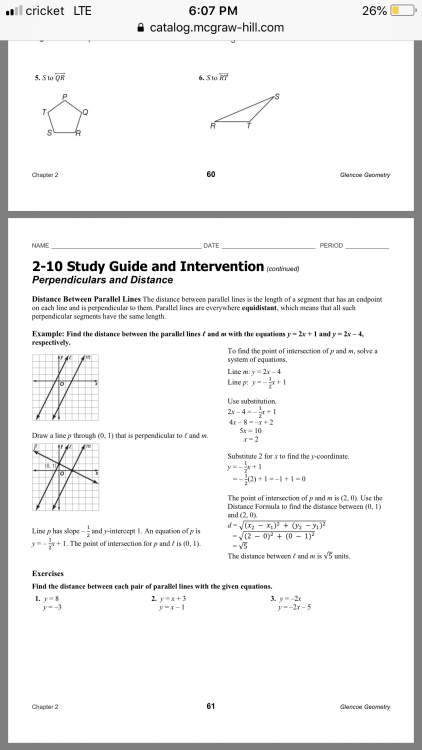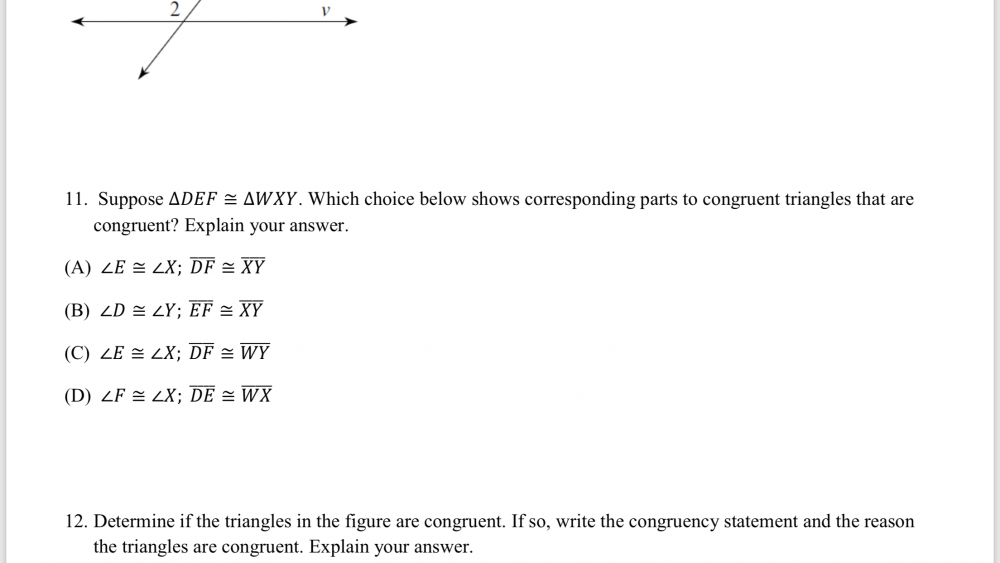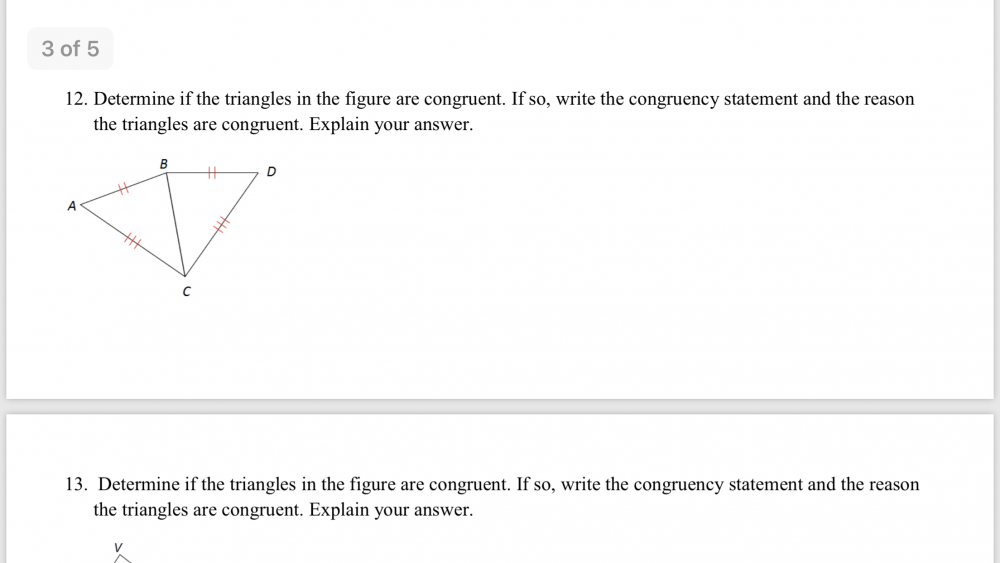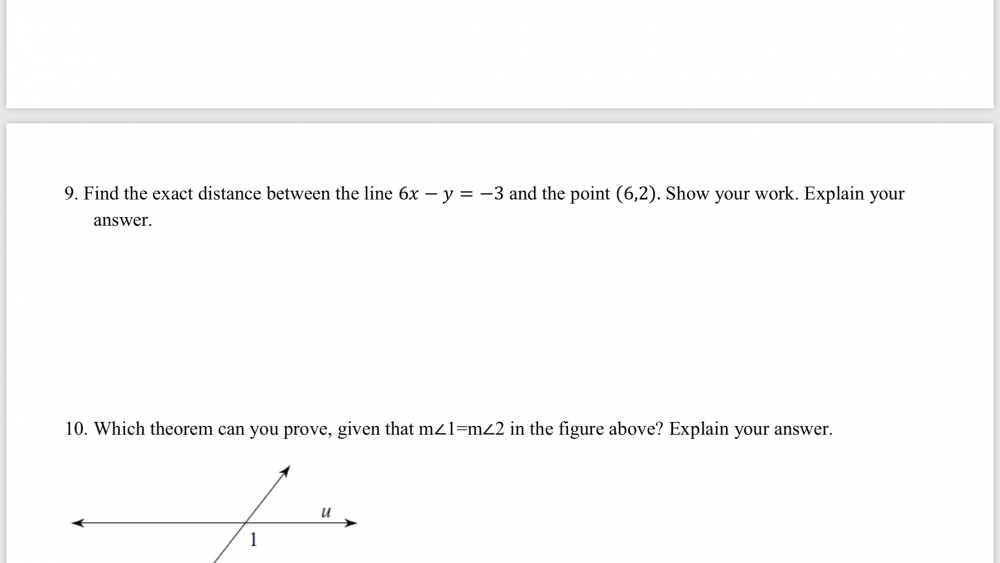

Rachel Maddiee
Senior Members-
Posts
108 -
Joined
-
Last visited
Content Type
Profiles
Forums
Events
Everything posted by Rachel Maddiee
-
It doesn’t ask me to show my work so how should I write it out?
-
#8 The density of the copper sample is unknown. The known values include the initial and final volumes and the density of a vessel. density = 30 mL initial volume = 5.0 g final volume = 40 mL Volume of sample = final volume - initial volume Is this correct what I have so far??
-
It’s different compared to the wiki. I tried it again with the elements and got Element A, Element D, Element B, Element C
-
Did I calculate that correctly?
-
I don’t get it. Find the atomic radius?
-
1.25984252 yd?
-
Element B, Element D, Element A, Element C, Is that correct?
-
-
-
The shortest distance between a point and a line (which is what is meant by "the" distance between them) is along a line perpendicular to the line. The line is given by y= 6x+ 3 so has slope 6. A line perpendicular to that has slope -1/6. The line through (6, 2) with slope -1/6 is y= (-1/6)(x- 6)+ 2 so 6y= -x+ 6+ 12 or x+ 6y= 18 Substitute (two lines which intersect) y=6x+3 into x+6y=18 and you get: x + 6(6x+3) = 18. x + 36x +18 = 18 37x +18 =18 37x = 0 x = 0 So that means that x=0 at the point where the lines y=6x+3 into x+6y=18 intersect. Substitute y = 6x + 3 y = 6(0) + 3 = 3 y = 3 The point of intersection is (0, 3). Then, use the distance formula to find the exact distance between (0,3) and 6,2) d^2 = (x2 - x1)^2 + (y2 - y1)^2 So the distance between (0, 3) and (6, 2), squared, D^2= (0- 6)^2+ (3- 2)^2= 37 and then D= square root (37).
-
Can you show me?
-
-
Yes, it’s an example of the accepted method.
-
-
are you sure the notation is correct and it’s not triangle BAC = BDC?
-
-
-
Can you help me with the justification/explanations?
-
The distance from 3 to 13 is 10. 4/5 of that is 10(4/5)= 8 so 4/5 of the way from 3 to 13 is 3+ 8= 11. The (signed) distance from -5 to -15 is -10. 4/5 of that is -10(4/5) is -8 so 4/5 of the way from -5 to -15 is -5+ (-15- (-5))(4/5)= -5+ (-10)(4/5)= -5- 8= -13. The point 4/5 of the way between (3, -5) to (13, -15) is (11, -13).
-
The distance from 3 to 13 is 10. 4/5 of that is 10(4/5)= 8 so 4/5 of the way from 3 to 13 is 3+ 8= 11. The (signed) distance from -5 to -15 is -10. 4/5 of that is -10(4/5) is -8 so 4/5 of the way from -5 to -15 is -5+ (-15- (-5))(4/5)= -5 -5+ (-10)(4/5)= -5 -5- 8= -13. The point 4/5 of the way between (3, -5) to (13, -15) is (11, -13). Like this?
-
I want to write it out exactly like Country Boy did.
-
How do I give an explanation without using graphs?
-
-
No, I want to stick with your method. In terms of geometric explanations and justification I want to make sure I understand what you’ve used exactly.
-
In the diagram what formula did you use?

